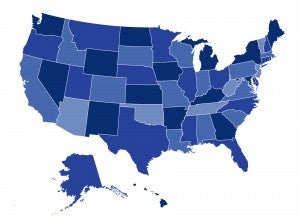
Just 33 working days away from the launch of the new health insurance marketplaces, and many observers are worried about “readiness”: readiness of the new health insurance exchanges, particularly the IT and data infrastructure. Readiness of the navigator programs that will educate consumers and help them enroll in new coverage options. And readiness of health insurers and state officials for the significant changes required by the Affordable Care Act’s (ACA) market reforms and new benefit standards.
I’m not an IT expert so I’m as anxious as anyone to hear that the necessary systems will be tested and de-bugged in time. And I’m waiting with bated breath for the Administration’s announcement (hopefully this week?) of grants to support navigator programs in the federally facilitated exchange states.
But on the last question – implementation of the ACA’s new benefit standards, I’m pleased to report good progress. CHIR, in partnership with the Urban Institute, has been engaged in a Robert Wood Johnson Foundation project to monitor ACA implementation in 11 states: Alabama, Colorado, Illinois, Maryland, Michigan, Minnesota, New Mexico, New York, Oregon, Rhode Island, and Virginia. Our most recent report, released this morning, examines how insurers are coming into compliance with the ACA’s new essential health benefits standard. In our report we find that:
- Technical glitches and tight deadlines posed challenges for insurers and regulators alike, but an “all hands on deck” mentality has kept the product development and review process moving forward.
- Officials in all but one state reported that they have good, if not always timely, communication with the federal government regarding implementation of the EHB standard.
- Insurers and regulators in most study states reported that the shift to an EHB standard would cause minimal change or disruption, while in one state it would result in a significantly expanded set of benefits for individual policyholders.
- Insurers are engaging in minimal substitution of covered benefits in the first year, meaning that plans will closely resemble the benefits, limits, and exclusions prescribed in the benchmark package, with differences reflected primarily through cost-sharing and network design.
- States and insurers are adapting to new requirements to review plans for discriminatory benefit designs and coverage of habilitative services.
- One study state (Oregon) is facilitating consumers’ ability to make “apples-to-apples” comparisons among plans by standardizing benefit designs inside and outside the health insurance exchange.
For more details you can find the report here. Our findings suggest that designing health plans to comply with the ACA’s 2014 market rules has been no small lift for insurers in our study states, and the review and approval process has stretched the capacity of state officials. But most companies met the required deadlines and state departments of insurance have deployed practical approaches to manage the significant expansion of work.
However, there are ongoing questions about whether insurers will continue to conform their policies to the state’s benchmark plan, or engage in more substitution once the initial challenges of ACA implementation have dissipated. And Oregon’s standardization of both benefits and cost-sharing is likely to be closely watched by the federal government and other states. Lastly, the new ACA requirements, particularly the prohibition on discriminatory benefit design and coverage of habilitative services, will present new compliance and oversight challenges for insurers and state regulators alike.
For more on the Robert Wood Johnson Foundation’s project to monitor ACA implementation in 11 states, visit: http://www.urban.org/health_policy/States-and-the-Affordable-Care-Act.cfm

